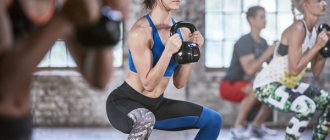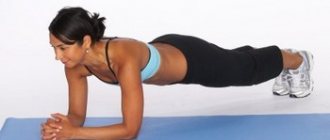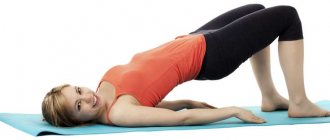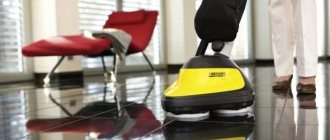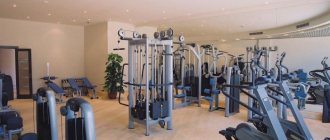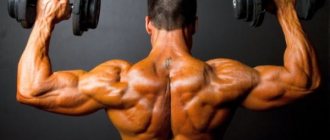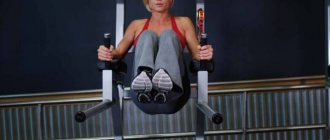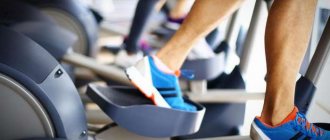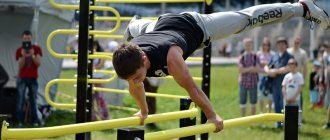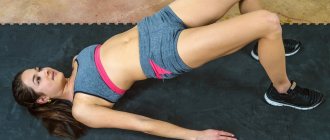Let's look at the most effective exercises in the gym and name the top 5. The first three are the most important; you must include such exercises in your workouts. The remaining two exercises are fundamental, but they can be replaced as similar as possible. The most effective exercises in the gym by importance
https://youtu.be/klssdO_jB88
For natural training to increase muscle mass, you need a release of hormones. Therefore, these exercises are mainly basic, so that you have a release of hormones and you start training effectively in the gym.
1. Exercise: Barbell Squats
- Standard barbell back squats. This is the best exercise because it engages the maximum number of muscles. With the correct technique, this exercise is as safe and less traumatic as possible. Squats place the load more precisely on the part of your legs that you need based on your leg stance. I would compare this exercise to a deadlift. Two good basic exercises. But in the deadlift, the load on the muscles is more diffuse.
2. Exercise: Bent-over barbell row
- There were many doubts about whether to put deadlifts or pull-ups in second place. Undoubtedly, pull-ups are the best basic exercise for the back, but by choosing the deadlift, we believe that it works the back muscles more clearly. Pull-ups are a more basic exercise. Why is bent over row so good? It maximally loads the lower back and loads the lumbar column. Legs work in static conditions. When we do the same pull-ups, our latissimus dorsi muscles work more. We have quite a lot of muscles in our back that are worked out when performing bent-over rows. Moreover, if we bend at an angle of 45 degrees, we can take a more maximum weight and load a more maximum number of back muscles. But we would put pull-ups next to deadlifts in second place.
3. Exercise: Dumbbell bench press.
- Dumbbell bench press at a minimal angle. Many people think that the barbell bench press and the incline barbell press are ideal exercises. Undoubtedly, the barbell press is the best basic exercise, but in the dumbbell press at an angle of 15-30 degrees, your delta has not yet engaged in the work, but your chest is already working. Again, we would place the bench press next to the dumbbell press, exercises that are basically the same in importance. Both the dumbbell press and the barbell are the foundation.
These three exercises are a good base with which, in principle, you can achieve good muscle growth.
4. Exercise: Seated dumbbell press.
- The slope of the bench is 90 degrees. Exercises for the shoulder girdle. There’s nothing better than him that won’t pierce your shoulders like that. The exercise works very well on the shoulder joint and, moreover, works the upper chest and triceps when performing seated dumbbell presses.
5. Exercise: Standing dumbbell curl
- Great exercise for biceps. Works well on the outer biceps. Concentrated execution and correct technique will allow you to work your biceps well. Several options for performing this exercise. Hammer movements, hammer movements with wrist rotation, dumbbell curls for biceps with supination.
The complex contains the most effective exercises in the gym and is designed for the healthiest people possible.
If you have any injuries (back, elbow, shoulder) most likely this top will not suit you. There are quite a lot of both basic and isolation exercises. It is not necessary that if you perform a bench press, your chest should progress. Perhaps you will see results by doing dumbbell bench presses. An individual approach is needed. Progress is our work on ourselves. The most effective exercises in the gym and proper recovery are the key to progress in muscle growth.
What are basic and isolated exercises?
BASIC EXERCISES - the second name is multi-joint, when 2 or more muscles are involved in the work, and the main load is placed on 1 large one.
ISOLATED EXERCISES - the second name is single-joint, 1 muscle is involved in the work and the emphasis of the load is on it.
Many beginners do not want to do basic exercises, inventing different reasons, but there is only one reason - THIS IS NOT THE DESIRE TO DO THE BASIC, BECAUSE IT IS HARD! Therefore, they bomb the muscles exclusively in isolation, and then they wonder why there is no point.
Basic exercises set the growth and general shape of the muscles, while isolated ones tighten problem areas and make “cosmetological” correction of the figure.
Only rough basic exercises allow you to build strength and mass.
Basic exercises for gaining mass
Breast:
• Bench press (in horizontal and inclined versions - head down and up); • Dumbbell bench press (in horizontal and inclined versions - head up and down); • Push-ups (the body is slightly tilted forward, do not straighten your arms at the top point, your elbows are slightly moved away from the body); • Pushups.
Back:
• Deadlift; • Pull-ups; • Bent-over rows of barbells and dumbbells; • Pulldown of the upper block to the chest; • Bench horizontal row (reverse bench press, but with your head down and the weight pulled toward your chest or waist). • Pulling the block to the belt; • Bent-over dumbbell row.
Legs:
• Squats (with a barbell, dumbbells, kettlebells, plates, or even with a girl on your shoulders); • Leg press; • Hack squats; • Deadlift on straight legs; • Lunges (no matter what sports equipment you use); • Raising on your toes (standing or sitting - load on the calves).
Deltas (shoulders):
• Bench press; • Barbell chest press; • Seated dumbbell press; • Barbell row to the chin.
Biceps:
• Standing biceps curl; • Lifting dumbbells for biceps while sitting - standing; • Hammer dumbbell curl (activates the brachioradialis muscle).
Triceps:
• Bench press with a narrow grip; • Push-ups (keep your body strictly straight, arms are fully straightened at the top point, elbows move strictly along the body).
Sports electronic library
Non-standard exercises in physical education lessons.
| (0) |
Add to favorites
The inclusion of non-standard exercises and outdoor games in the educational process allows you to transform physical education lessons and increase their effectiveness, since the development of initiative and creative search in the work of a teacher is of particular relevance today. From the variety of outdoor switchgear, it is better to use those exercises that are rarely found in the daily work of a teacher. Students perform them with the greatest interest, which helps strengthen their physical qualities. A child's body requires a huge amount of movement for its development. The recovery processes in it take place very quickly, so children can do more work than adults. This means that the exercises should be intense, but short-term (20–40 seconds), with little rest, and all basic exercises should take no more than 20–30 minutes. classes. By using these exercises in the classroom, you can ensure that students’ interest in physical education grows from year to year and remains for life.
Exercises individually and in pairs
1. I.p. – o.s., hands behind the head. 1 – sitting, legs crossed; 2 – i.p.
2. The same - in a line, arms to the sides, hands on the shoulders of those standing next to you.
3. I.p. – stand on the right leg, left leg behind, ankle pressed to the “popliteal knee”. 1 – squat, arms to the sides; 2 – i.p.
4. The same jump from a squat moving forward.
5. I.p. – stand with your legs apart crosswise, right (left) leg forward, bend forward, grabbing the ankle with the same hand. Walking forward and backward.
6. The same i.p. – stand with legs apart, bend forward, arms crossed, grab the heels from below. Walking on toes moving forward, backward, to the sides.
7. The same i.p. – stand with your legs apart, bend forward, arms crossed, grab your toes from above. Walking on your heels.
8. I.p. – lunge forward with your right (left) leg, grab your thigh with your hands from below at the knee. Jumping on the front leg to the right (left), helping with your hands.
9. The same, but i.p. - grab the shin with your hands.
10. Exercises are performed in pairs:
11. I.p. – lie on your forearms, grab your elbows with your hands. Walking forward, backward, right, left, alternately moving your arms and legs.
12. I.p. – lying on your forearms, palms forward. Moving in a circle, feet in place.
13. I.p. - lying on your stomach, hands behind your head. Rise upright while lying on your elbows. Moving in a circle (feet in place).
14. Also - moving forward, backward, to the side on your elbows and toes, alternately moving your arms and legs.
15. Exercises are performed in pairs:
16. I.p. - grab the left foot with your right hand, grab your head with your left hand. 1 – squat on the right leg; 2 – i.p.
17. I.p. – standing on your left leg, right behind you, toe at the knee. Grab your foot and squat down on your right leg. Alternately moving your arm and leg, jump forward.
18. I.p. – sit legs apart (knees bent). Hands inward at the hips, grabbing the feet by the heels from below. Move forward on your forearms, alternately moving your legs.
19. I.p. – lying position. 1 – flip to a point-blank position lying behind; 2 – revolution in i.p. (rotation is performed in a circle).
20. I.p. - lying sideways on one hand, the other behind your head. Moving your legs in a circle.
21. I.p. – lunge with the left (right) leg to the side, hands behind the head. Jumping into the legs apart and back. The exercise is performed in a circle.
22. I.p. – lying position. 1 – pushing off with your arms and legs, jump up. Landing in the arms crossed, legs crossed position; 2 – jump up in IP. lying position; 3–4 – the same with changing the position of the arms and legs.
23. I.p. – emphasis on the back of the forearms, legs bent. Moving forward, backward and sideways.
24. I.p. – lying down, legs resting against the wall. 1–4 – movement to the left; 5–8 – move to the right.
25. The same - lying in a rest position from behind, legs bent, resting against the wall.
26. The same - in emphasis on the forearms.
27. The same - in support on the forearms from behind.
28. I.p. – gray hair on the heels. 1 – swing your arms forward up, jump up; 2 – half squat, arms forward.
29. I.p. – o.s. Standing close to your partner, holding each other with your right hands, left hand on your waist, lunge with your left leg to the side. Walking in a circle in a lunge.
30. I.p.: 1st – sitting with your legs bent, grab the knees of the second number with your hands, 2nd – lying down with support on your feet. Legs on the shoulders of number one. Moving forward, backward.
31. I.p. – sitting at an angle. Place your feet on each other's feet. There is a board between the feet. 1–4 – circular rotations of the legs to the left; 5–8 – circular rotation of the legs to the right.
32. I.p. – standing with your right side to each other, balance on your left leg, holding your partner’s right ankle with your hands. Move by jumping in a circle while maintaining balance.
33. I.p. – standing facing each other on one leg, the other extended forward. Holding the ankle of your partner’s outstretched leg with one hand, placing the other hand on his shoulder, moving by jumping forward and backward.
34. The same in a circle.
35. I.p. – the same as in exercise 33. 1 – squats on one leg (“pistol”); 2 – i.p.
36. I.p. – standing sideways to each other, holding hands under the knees of the legs raised up. Jumping on one leg in pairs forward and backward.
37. The same, but taking each other’s feet.
38. The same with straight legs. I.p. - Same. Partners stand on one leg, sideways to each other, with their feet touching.
39. The same with grabbing the “popliteal knee” with the ankle.
40. I.p.: 1st – lying position, 2nd – O.S., taking the first number by the legs. Move forward, backward or in a circle.
41. I.p.: 1st – lying down, feet on the shoulders of the second number, 2nd rest – squatting with your back to your partner, holding his ankle with your hands. Simultaneous or alternate movement in a circle.
42. In a sitting position, pushing off with your legs, perform alternate swings upward, trying to touch your partner’s raised hand forward.
43. Somersault forward over your partner’s back, grabbing him by the torso.
44. The first number, standing behind the seated person, leaning on his straight arms, jumps over him, bending his legs, and after landing performs a somersault forward, after which, getting to his feet, the second number performs the same exercise.
45. I.p. – standing facing each other, legs apart, holding hands. Synchronized turns: 1–4 – left, 5–8 – right.
46. The first number approaches the second, puts his right (left) leg on his arms, resting his hands on his shoulders, and jumps up, while performing a 180° or 360° turn in the air. The second number simultaneously throws the first one up during repulsion. Insurance is required!
47. The first number lifts the second number by the hands, he, in turn, bends and, straightening his legs, stands up.
Exercises in a column one at a time
1. In a squat, grab the heels of the person in front with your hands. Walk forward without releasing the grip.
2. The same, but grab with your hands the shin of the right (left) leg of the person in front.
3. I.p. – lying down behind you, hands on your partner’s feet, with legs bent. Moving forward and backward.
4. I.p. – lunge forward with your left foot, grabbing the leg of the person in front with your hands from above. Walking while moving to the side without releasing the grip. The distance between students is 1 m.
5. The second numbers perform a turn in a circle. The first numbers - lie down on the feet of the second numbers, who, in turn, take the ankle of the first numbers located behind. Move forward and backward without releasing the grip.
6. The first numbers come close to the second ones and take them by the arms. The second numbers raise their legs and pass them into the hands of the first numbers in front of them. At the teacher’s command: “March!” the first ones begin to move forward and walk 15–20 m. After stopping, the students change places, and the second numbers carry the first ones, who are hanging in the arms of the second numbers.
7. I.p. – standing on your right leg, raise your left leg forward and grab the outstretched leg behind the person standing with both hands. The exercise is performed back and forth, left and right at the command of the teacher.
8. The first student, bending his torso forward, offers his hand to the person standing behind him between his legs. He takes the first person’s hand with one hand and gives the other hand to the next participant. Thus, the column moves forward by walking, running or jumping on two legs, depending on the teacher’s command.
Exercises in groups
1. The first and second numbers stand sideways to each other, holding hands. The third number, stepping with his left (right) foot over his closed hands, takes those standing next to them by the shoulders; they, in turn, lift it and in this position move forward.
2. The first and second numbers stand next to each other, hands behind their backs, fingers clasped together. The third number stands in their arms, taking them by the shoulders. The trio begins to move forward.
3. I.p.: first and second numbers - o.s., hands up, fingers “locked”; the third and fourth numbers - lean forward, clasping the first and second numbers standing in front with their hands around the waist. The fifth number stands on the backs of the third and fourth, holding the hands of the first and second numbers. While maintaining balance, the five moves forward.
4. I.p.: the first number takes the legs of the second number, who is in a prone position; the third number takes the position lying to the left of the second, placing his legs on his upper body. The same - on the right side, but placing the legs on the lower part of the body of the second, performs the fourth number. Maintaining this formation, the four moves forward.
5. The first four participants stand facing in a circle, placing their hands on the shoulders of those standing next to them, then sit down. The other four sit on the shoulders of their partners and also put their hands on the shoulders of those sitting next to them. After this, the first four stand up, and the members of the second four grab them behind their backs with their legs.
At the teacher’s command, the participants of the first four take two steps to the left (right) on a count of 1–2, a squat on a count of 3–4, and the same in the other direction on a count of 5–8. After this, the fours change places. The exercise is performed with insurance.
6. The first four students stand with their backs in a circle next to each other, grabbing the elbows of those standing next to them. Having assumed a prone position, the participants of the second four pass their legs into the hands of the participants of the first. On a count of 1–2, they perform bending and extension of their arms in a lying position, on a count of 3–4, they take two steps with their arms to the left (right), and so on until they go through a full circle and return to the standing position. The participants of the first four perform steps in a circle. Then the fours change places.
The order of performing exercises (muscle compatibility)
Here we will describe an example of the correct sequence of muscle loading during a workout, that is, when performing a basic exercise (back, chest, legs), the isolated muscles are not affected, you then load them fresh:
Scheme No. 1
Back – triceps – abs Chest – biceps – forearms – abs Legs – shoulders – abs
You can choose a different scheme, but remember that when doing it, the muscles are involved in basic exercises and will be a little tired, so the weight will have to be reduced a little, and this may affect strength and mass, for example:
Scheme No. 2
Back – biceps – rear deltoids Chest – triceps – anterior deltoids Shoulders – triceps
In most cases, use the first scheme, at least in the initial stages of training, and then when you gain experience, you will experiment yourself and choose the best option for yourself.
Subscribe to groups on social networks (VKontakte, Odnoklassniki, Facebook, Twitter), it’s very easy to find us, just write Bomb body in the search for the desired group!
https://youtu.be/2-L8JQh5QK8
Leg extension in the simulator
This exercise is dangerous because such an amplitude of movement is unnatural. Evolution did not expect the human quadriceps to work in isolation with the knees above waist level. This exercise is great for working your quads, but it puts a lot of stress on your knee joint. Better replace it with front squats.
Pray. What should Christians do in May, dedicated to the Virgin Mary?
Heroes from across the pond: doctors from across New York tell their story of the epidemic
The graduation party took place: the mother gave her son an unforgettable celebration
